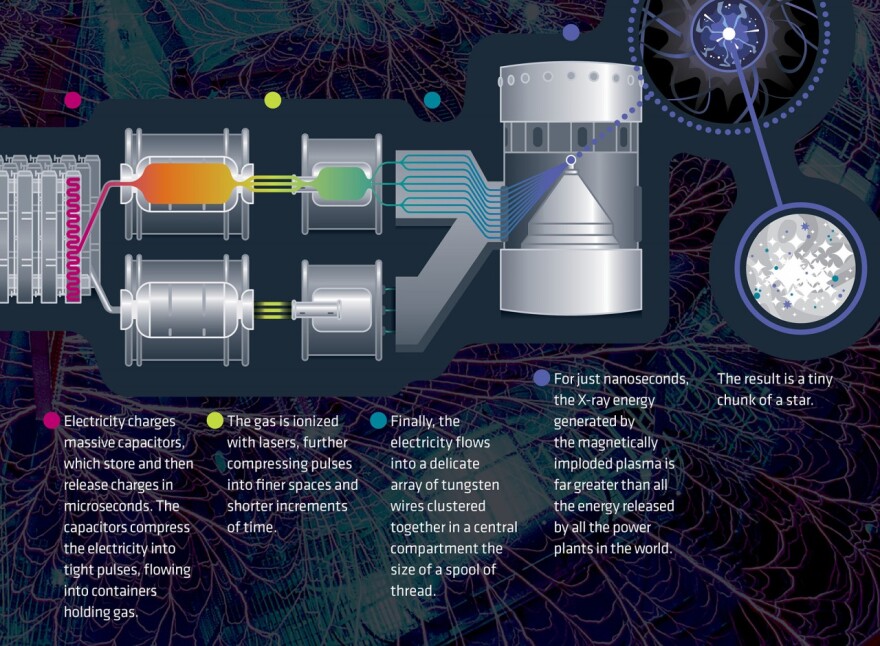Astronomers usually study their subject from afar. They peer at stars and planets through telescopes, or rely on physics and math to hypothesize about the universe. Now, a group of researchers at UT Austin hopes to open up a new way of studying space: by re-creating the stuff stars are made of in labs right here on Earth.
Stars are made of plasma, a super-hot gas that can reach 3 million degrees. Known as the “fourth state of matter,” plasma develops unique physical properties. Scientists make it here using the “Z-machine” at Sandia National Labs.
The Z-machine is "about two-thirds the size of a football field, and it has 30-plus capacitors that store energy. They’re the size of refrigerators,” says Mike Montgomery, a research scientist in UT’s Department of Astronomy who is helping develop the process.
He says all the machine's energy can be discharged simultaneously, “so all this charge and current is compressed in time and in space down to a small area no more than half a meter across. And since all this is rushing down there, it causes sort of a mini-explosion really and reaches temperature of 2 or 3 million degrees.”
And presto, you’ve got your star stuff – for maybe a fraction of a second.

That achievement has “changed completely the field of astronomy," says Don Winget, an astronomy professor at UT, "and I think it will revolutionize it.”
With funding from the U.S. Department of Energy, Winget and Montgomery are now heading up a new UT Center for Astrophysical Plasma Properties that will use the technology to learn what they can about stars.
Here's how Winget says it works: "We estimate the physical conditions that we observe ... and we reproduce that in the lab and compare it to what we see in the cosmos.”
Winget, who directs the center, says researchers already have re-created matter similar to the material that flows into a black hole and are now looking at re-creating the surface material from a white dwarf star.
“They're hot and they cool off,” he says. “So you can tell their age from their temperature.”
Why does that matter? Much of what we theorize about the universe comes from what we know about stars, so a clearer understanding of how stars age and evolve would shed more light on everything else.




